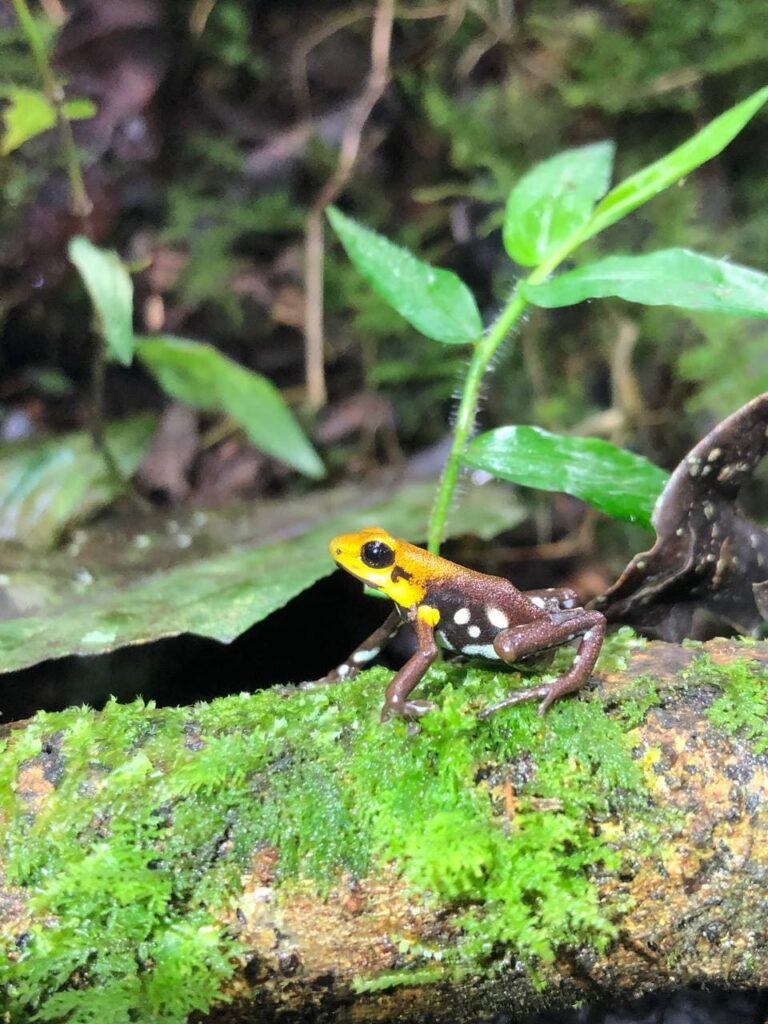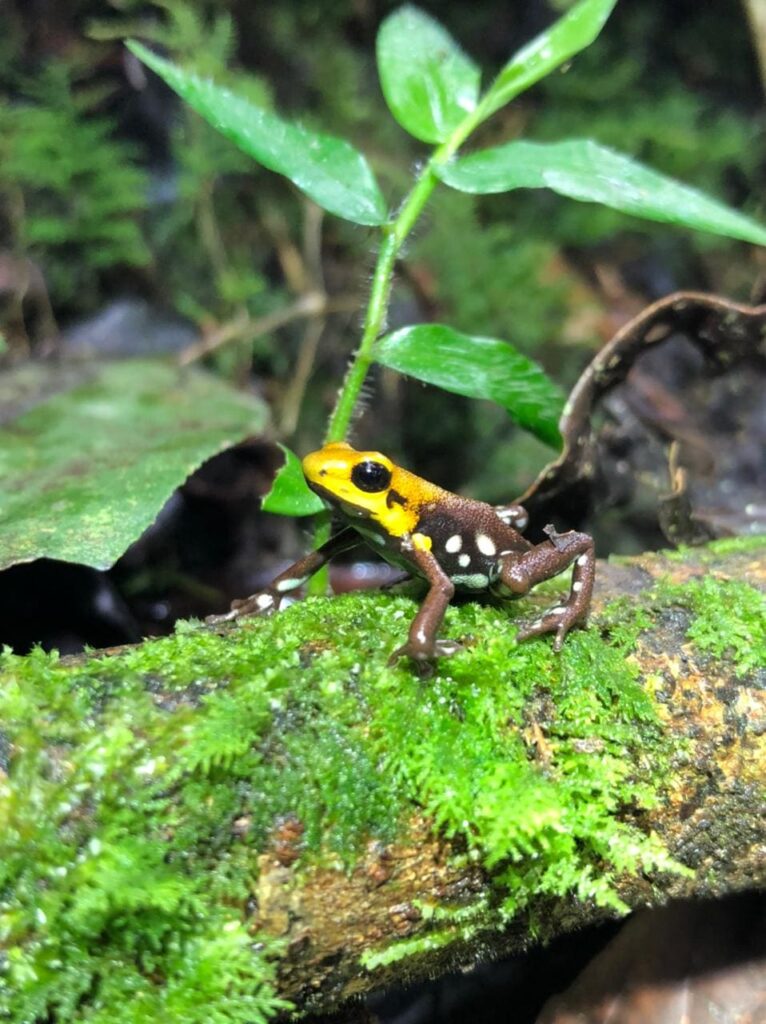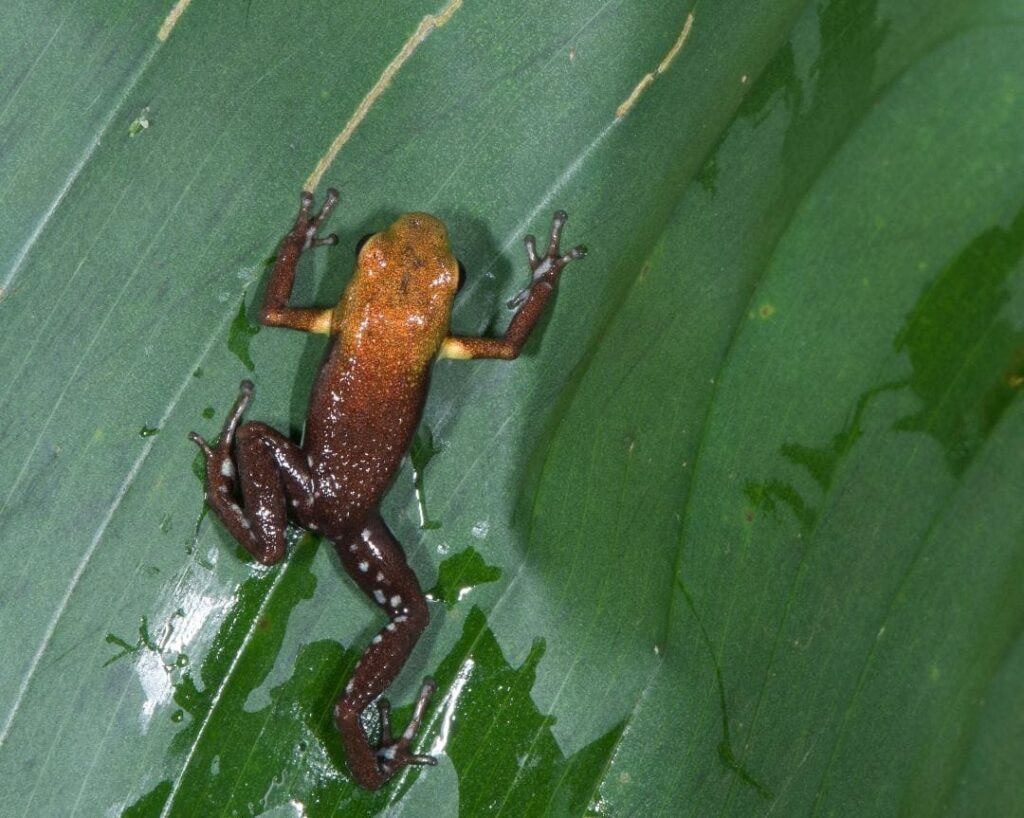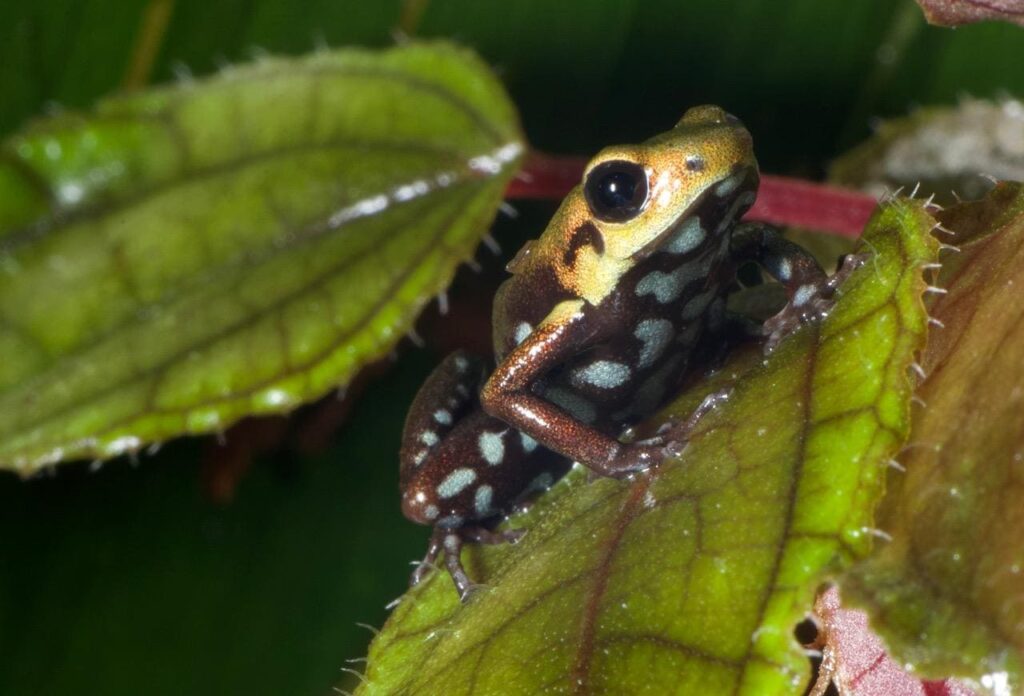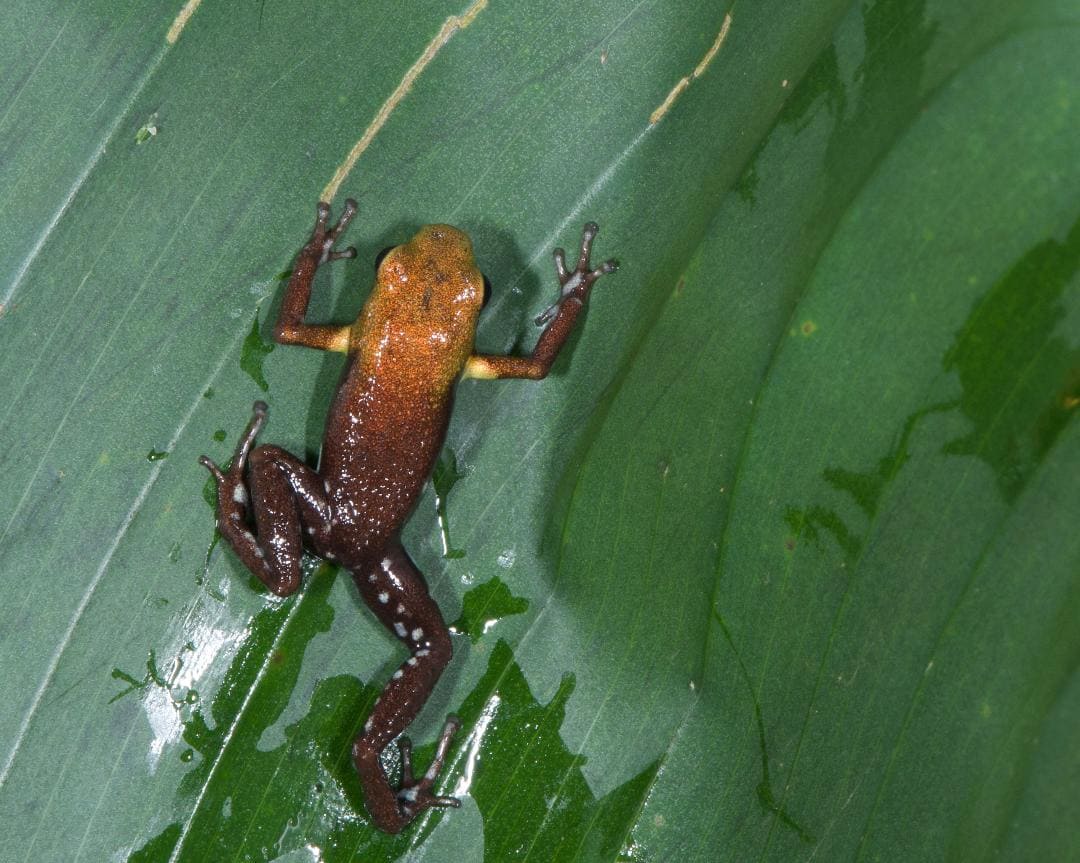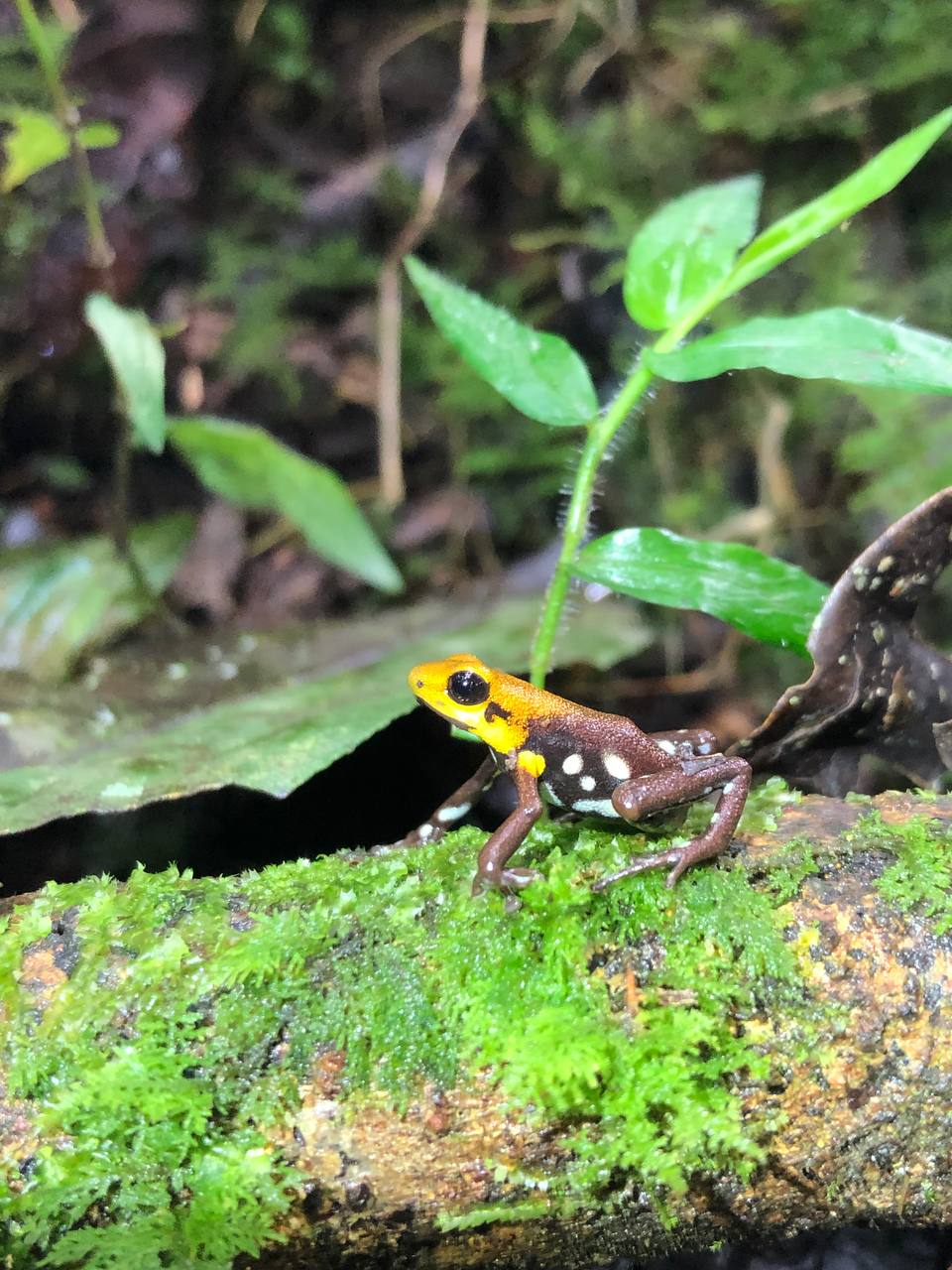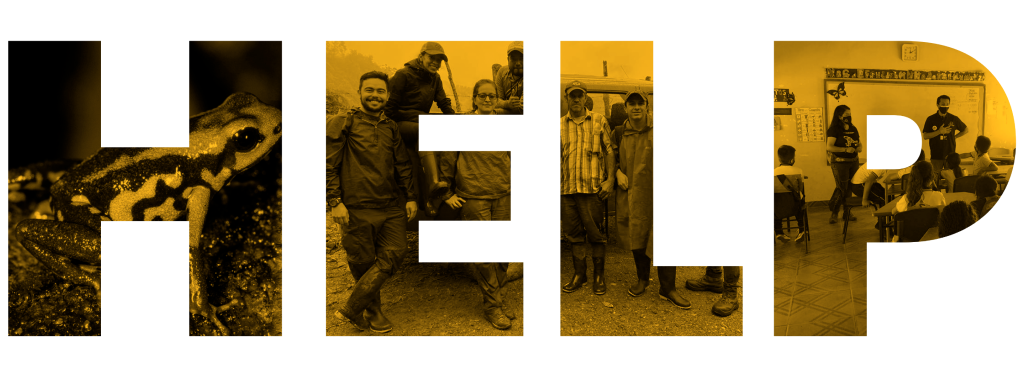Biocommerce could save the golden frog of Supatá from extinction
Tesoros de Colombia, with the authorization of the National Authority of Environmental Licenses (ANLA), is advancing in the experimentation phase for captive breeding of this amphibian of the genus Andinobates, which is critically endangered due to the environmental damage its habitat endures. This would be the first step to achieve, in the medium term, the reintroduction of the frog into its forests and gradually recover its populations.
Tesoros de Colombia, with the authorization of the National Authority of Environmental Licenses (ANLA), is advancing in the experimentation phase for captive breeding of this amphibian of the genus Andinobates, which is critically endangered due to the environmental damage its habitat endures. This would be the first step to achieve, in the medium term, the reintroduction of the frog into its forests and gradually recover its populations.
At the beginning of October 2023, the world learned about the Global Amphibian Assessment for the Red List of Threatened Species of the International Union for Conservation of Nature (IUCN), the second publication of its kind drafted in the last 20 years.
The document, published in the journal Nature, was led by the organizations Re-Wild and Rainforest Trust. More than a thousand scientists from around the world participated in its preparation, revealing that 2873 species on five continents (out of an approximate total of 8,000 existing ones) live under some degree of threat. This figure places amphibians as the vertebrate group most at risk of extinction in the world, followed by sharks and rays (37 percent), mammals (27 percent), and reptiles (21 percent).
In addition to providing many figures and explaining the causes of a distressing decline, the research placed Colombia as the country on the planet with the highest number of amphibian species at risk—320—out of a total of eight hundred inhabiting the territory.
With the report in hand, the IUCN called for a "massive increase" in conservation efforts. And it suggested a significant mobilization of resources to find missing or lost species and increase their protection.
Another alternative proposed by the international organization focused on promoting captive breeding programs from specimens of the most affected species to reintroduce those individuals into ecosystems affected by climate change—with phenomena such as erosion, droughts, and temperature alterations—or damaged and altered by the advance of agriculture and livestock farming, two activities that, according to the analysis, weigh heavily on the decline of frogs, toads, caecilians, or salamanders.
And precisely this latter—this captive breeding or ex situ—is what Tesoros de Colombia is trying to consolidate with one of the many Colombian frogs that could disappear in the short term and that were included in the global report.
It is the Andinobates supata, also known as the golden frog, which inhabits a small forest remnant located 37 kilometers from Bogotá, in the municipality of Supatá (Cundinamarca), the locality for which the amphibian received its scientific name.
Its forests have been cleared.
The species was found about 15 years ago, but its description, which officially led it to be part of the records of Colombian biodiversity, was only finalized in 2021.
At the time, the discovery of the frog was widely celebrated. However, shortly thereafter, joy gave way to concern, as research began to emerge that took into account the species' situation and classified it as Critically Endangered.
The Andinobates supata, as small as an almond and adorned with green, yellow, and golden tones, is distributed in a very restricted area of no more than 5 square kilometers, between 1800 and 2000 meters above sea level, where human activity is high.
More than 90% of the original forest where it likes to take refuge has been cleared. Likewise, the streams and rivers surrounding the vegetation receive considerable discharges of agrochemicals, mainly from livestock farming, although agriculture also contributes to the damage. These productive activities not only affect individuals directly but also end bromeliads and other plants where the frog lives and manages to reproduce. Such a small home and surrounded by so many threats make its vulnerability increase day by day.
The frog is also attacked by illegal wildlife trafficking, led by people who illegally extract specimens from the natural environment to sell them and take them abroad.
Halt to trafficking and reintroduction of specimens
o mitigate the situation, environmental education campaigns have been proposed to rescue the golden frog. Even in Supatá, the community has begun to get to know and care for it as a local symbol, to the point that a monument was built in its honor in the main park of the municipality, and an annual festival is held to highlight its existence supported by various public institutions and private organizations. (See Figure 1)
Figura 1. Póster del Festival de la rana de Supatá 2023
But, Tesoros de Colombia is working on consolidating a more scientific and sustainable contribution. Today, with the permission of the National Authority of Environmental Licenses (ANLA) and the Autonomous Regional Corporation of Cundinamarca (CAR), it is advancing in an experimentation phase to perfect the frog's reproduction under professional and expert care, starting from a few specimens, called parental, which were legally obtained from the wild.
From this work, and when the birth of the offspring is perfected, Tesoros de Colombia would carry out two tasks aimed at their conservation: on the one hand, seeking to reduce pressure on natural populations, it would export some of those golden frog individuals, halting the illegal trafficking of the species by replacing demand.
This latter, which is a commercial phase that must also be authorized by the ANLA, would transform into a legal offer, obtained sustainably, which produces a domino effect in favor of the amphibian: because the price paid abroad for each individual is reduced, aquarium owners or collectors can obtain healthy individuals adapted to human care from birth without resorting to the black market, and the 'business' of those hoping to traffic it loses strength, as there begins to be an authorized supply that closes the door to trafficking and leaves it without sustenance.
Even, since pairs (female and male) arrive abroad, it is not ruled out that shortly thereafter the same entities or collectors may achieve their own breeding processes.
Obviously, all of the above is an activity that generates economic resources, necessary to maintain the operation of the facilities where amphibians are bred. And it becomes a job alternative that diversifies the economy and generates employment.
This includes an additional step where the frog can obtain a definitive benefit: by leading this reproduction process, Tesoros de Colombia must carry out, in the place where the first collections were made—or in other areas of Supatá previously agreed upon with the communities and CAR—a repopulation of golden frog specimens, which could be the basis for long-term recovery.
In a way, this step-by-step process, which is at the same time a conservation and knowledge generation project, could be explained by saying that the Colombian state entrusts, by way of a loan, a series of species to a group of experts so that they can reproduce them and prevent them from becoming extinct, a practice usual in many countries worldwide and even endorsed by the United Nations Conference on Trade and Development (UNCTAD), an organ that promotes transactions and investments in flora and fauna in developing countries, including those related to genetic resources, ensuring their care and long-term improvement at the same time.
Tesoros de Colombia already fulfills all the phases described above—reproduction, trade, and support for species in the field—with ten species of Colombian frogs, all in threatened situations, including Dendrobates truncatus, Dendrobates terribilis, Oophaga histrionica, and Oophaga lehmanni. And now it is being supported by the Active Conservation Alliance (ACA), based in the United States, interested in implementing projects aimed at

